Dmitri Kozhevnikov looked out to the water at San Onofre State Beach, where a high tide and lack of swell made for gutless conditions with only small waves rolling through.
“It’s perfect,” he said with a smile on a recent day.
Kozhevnikov and business partner Alexei Ostanin were at the beach to showcase their invention, Boost Surfing, an electric fin that allows surfboards to move faster in the water, without the need to paddle.
The duo, natives of Russia who now call Huntington Beach home, have created a buzz with their invention by raising $250,000 through an online fundraising site and have hopes of hitting the market by summer.
It was after they started learning to surf about two years ago that Ostanin, who has a mechanical engineering background, realized how much he was struggling because of an old injury to his left arm from rally sport racing.
“The hardest for me was paddling,” he said. “Why is there not an electric gadget available to me?”
His first thought was maybe a drone could help pull him out to the line up, but that idea was quickly scrapped.
Electric surfboards with motors inside the board have existed for years, but those mostly cost thousands of dollars. The cost for the electric fin? $199.
By May, Ostanin had mocked up a prototype for an electric fin — a big, clunky design – but one that worked when it was tested in a swimming pool.
As the partners fine-tuned their invention, there were some hits and misses. One complication came when they took the product from the pool to the ocean, unaware that the mechanics would work fine in fresh water, but not in salt water.
Sign up for our Coast Lines newsletter, a weekly digest of news and features on how the residents of the SoCal coast are building ties to their changing environment. Subscribe here.
Another early version worked for 20 minutes before it fizzled.
“The first ones were just rough prototypes,” Kozhevnikov said.
The most recent design includes a wireless device worn on the wrist, or attachable to the board, that controls the motorized fin. Push a button and it sends a signal to the motor in the fin, which has a circular shape with a fan inside that propels the board forward.
One short push of the button allows the motor to run for eight seconds, to help the surfer propel into waves; a longer push, used to get out to the line up, goes for 30 seconds. In the final version, times can be adjusted via an app.
In October, Kozhevnikov and Ostanin started marketing their product to the public — and got mixed reviews from surfers.
“It’s interesting,” Kozhevnikov said with a chuckle.
Their invention was featured on the popular Instagram handle “Kook of the Day,” which poked fun and generated negative comments from naysayers who scoffed at the idea of mechanical assistance while surfing.
Kozhevnikov looked at the bright side.
“We got 200 e-mails from that post,” he said with a laugh. “It’s important for the success of the company. If people didn’t care, it would be really bad.”
While some said they didn’t want to see it out in the water because it takes the core aspect out of the sport, others — including older surfers, those with a disability, or newbies — will welcome the assistance, Kozhevnikov said.
Others recommend they also apply their design to wake surfboards in lakes, to kayaks, to stand-up paddleboards, or to foilboards.
“We’re trying to do a ton of different adapters so it can work on anything,” Kozhevnikov said. “Paddleboards need a longer battery, shortboards, you need a smaller fin.”
If the product does gain popularity and starts popping up in the water, he said surfers — just like all ocean-goers — should use common sense.
“As in real life, respect other people,” Kozhevnikov said.
He said the fact that supporters gave funds to get their hands on the first products to be released was an indication they were on to something.
Their initial goal was $50,000, but the donations poured in. With the $250,000 the partners raised, they should be able to release 2,000 fins in their first batch, he said.
“This is important to us to validate the idea. What if we are nuts and the idea is not needed for anybody, right?” Kozhevnikov said. “When people actually back you with money, it’s an indicator that people really need that stuff. It’s really important for the company.”
The pair teamed up with San Clemente surfboard shaper Bobby Hasbrook, a 29-year-old who has been surfing since he was 2, to get feedback on how the fin affects surfing performance.
Hasbrook said his first impression was like that of many others: What will this do to the surfing world?
“Automatically, you start judging it,” he admitted.
But as Kozhevnikov started talking to him about how it could help beginners, or those who struggle to paddle, the value of the idea started to sink in.
“I have family members who are disabled. They wouldn’t be able to catch a wave by themselves very easily,” Hasbrook said. “Maybe they couldn’t stand up but they could catch a wave on their own. I think that is so cool, because surfing is so important to me. I couldn’t even imagine living without it. If something happened, God forbid, where I couldn’t paddle, it could totally save my ability to stay in the water and keep catching waves.”
But seeing it as a regular fixture in the line up? Hasbrook is still torn about that.
“If I’m going to take people who don’t surf and they want to surf, I would put this on their board. But do I want to see everyone in the line up with one of these fins in their board? No, I don’t want to see that,” said Hasbrook, who said he’s received a lot of hateful comments for supporting the product. “People can choose to abuse it, that’s just the reality.”
Tom Morey, who created the Boogie Board as well as countless other surf inventions such as the removable fin that makes the Boost Surfing product possible, said the idea is “long overdue.”
“The way it’s described, it seems very smart,” Morey said, likening the look to Bob “the Greek” Bolen’s Turbo Tunnel fin, which has a similar circular design set in the fin, but without the motor.
He had some advice for the inventors: Forget about the people who don’t like the design. “Go ahead with it, start selling what you can,” Morey said.
The best thing to do is keep it a tight-knit business between friends and keep control of the manufacturing, said Morey.
“Don’t go on ‘Shark Tank’ and get more people involved,” Morey said. “Don’t think you are going to get rich on it — but you’ll put a lot of smiles on a lot of faces.”

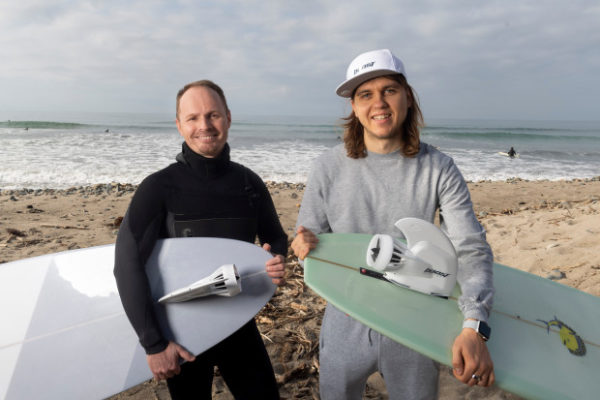
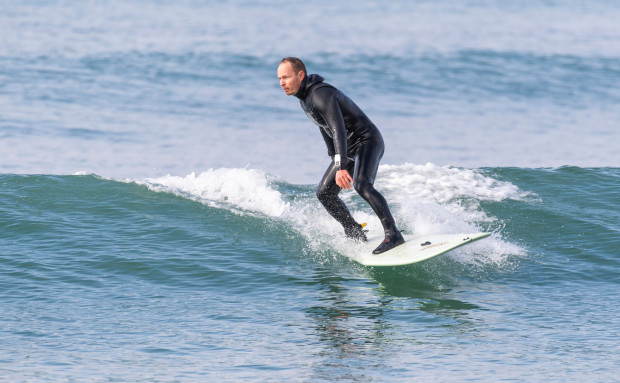
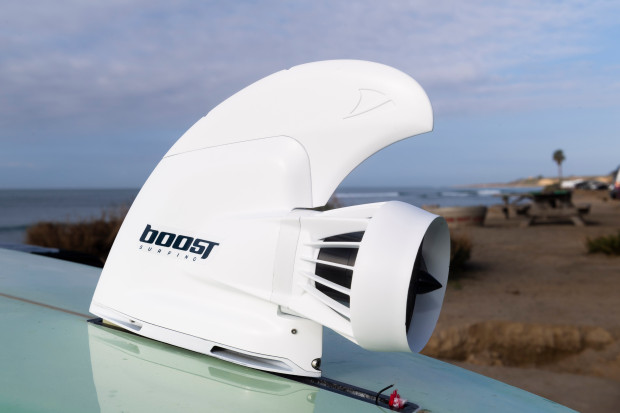
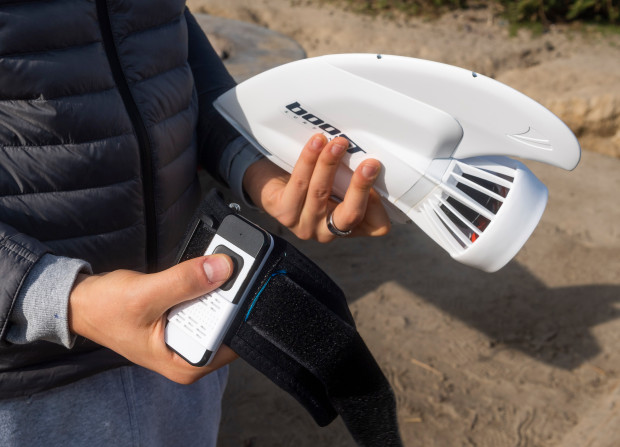
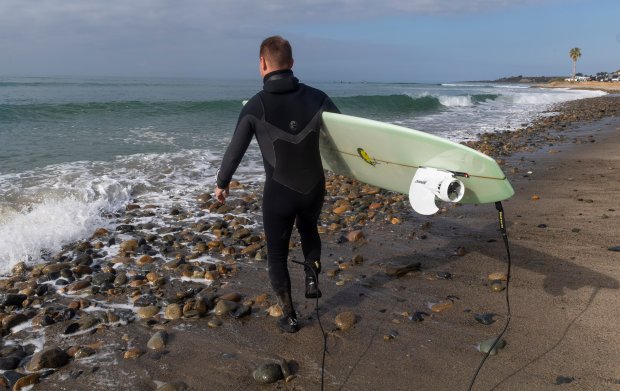
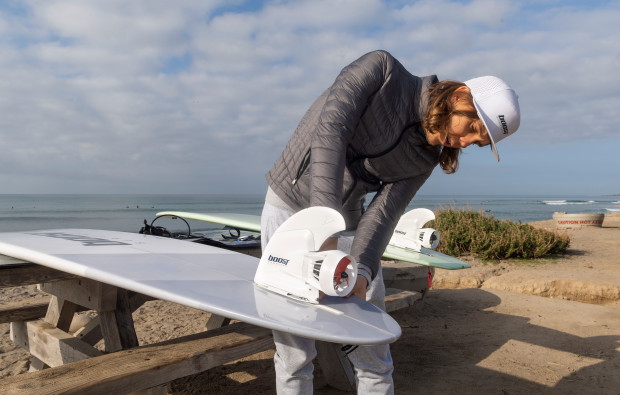
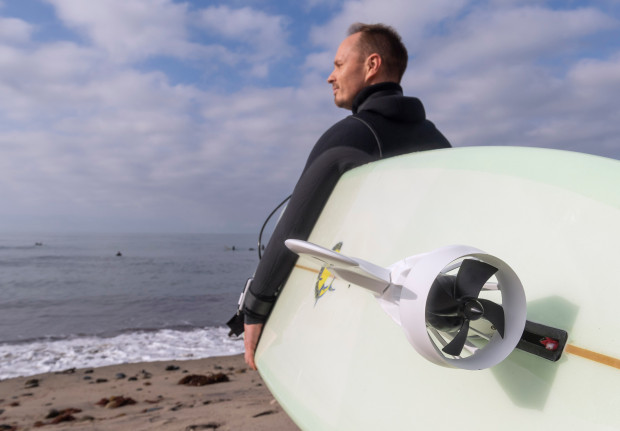




Recent Comments